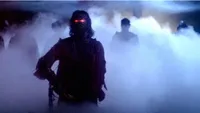
Which was the best decade for horror movies? We’re not here to hash that particularly ghoulish subject out, other than to suggest that the 1980s would be in with a very good shout.
This was the decade in which horror movies went well and truly mainstream. It’s also the decade in which the slasher genre assumed its final form, practical special effects reached a new level of technical excellence, and certain film makers started adding comedy into the mix.
The 1980s was also the decade of the VHS, when sharing and consuming the latest ‘video nasties’ at home became truly viable, not to mention desirable to most people. For a generation of Gen-Xers, these were the kinds of movies that were viewed before it was strictly appropriate to so, which of course only added to the illicit appeal.
More to the point, ’80s horror movies rocked. Some of the all time greats of the genre can be found in the following list.
Which ’80s horror movie is your favourite? Make sure you vote below.
The 20 best horror movies of the 80s
- Next up, vote for the best horror movies of the '70s
Get exclusive shortlists, celebrity interviews and the best deals on the products you care about, straight to your inbox.
Jon Mundy is a freelance writer with more than a dozen years of experience writing for leading tech websites such as TechRadar and Trusted Reviews.





















